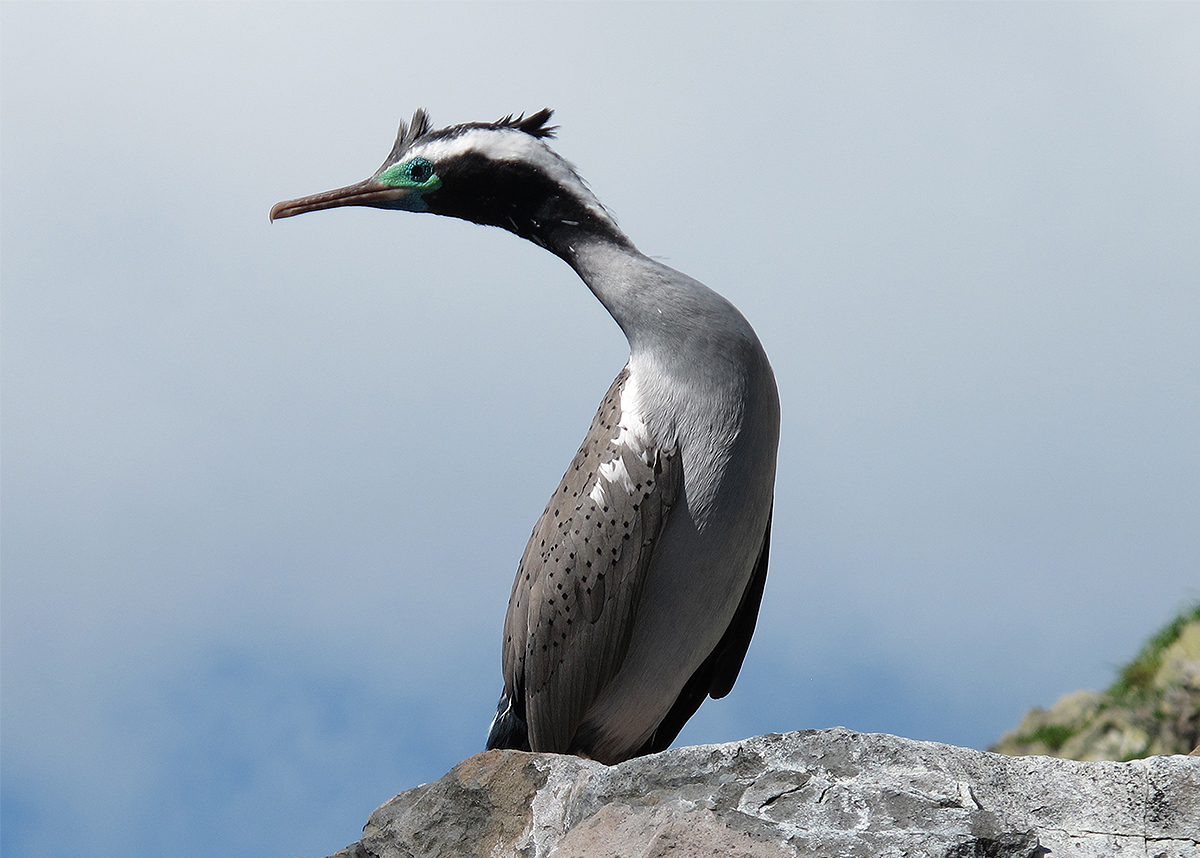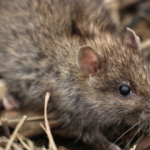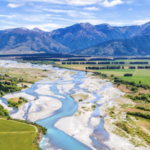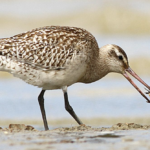The spotted shag or parekareka occurs only in New Zealand and reaches its northern limit in the Hauraki Gulf. The total population may be less than 30,000 pairs, with most of these in the South Island. Nationally it is not threatened, but in the northern North Island it is regionally threatened. Threats include human disturbance at breeding colonies, shooting (despite protection), overfishing reducing key prey species, and mortality through fisheries bycatch, especially in set nets.
Around Auckland, spotted shags still breed at Tarahiki (Shag Rock) and at two sites at the eastern end of Waiheke. Until the 1980s they also bred in the Noises Group and on Auckland’s west coast at Te Henga. They also formerly bred in large numbers on several islands off Coromandel.
In the early 20th century, the Hauraki Gulf population may have numbered 10,000 or more, but by 1950 only a few hundred remained. They were commonly shot by fishermen and boaties “because they eat fish” and this probably caused the sharp decline by the 1950s. In 1951, Geoff Buddle wrote…
“I vividly remember forty or more years ago cruising along the coast of Waiheke …spotted shags in those days not protected, were flying past in a constant stream all the afternoon, and, as is their habit, swerving in their course to try and pass ahead of the yacht. Two members of the crew armed with shot guns amused themselves for hours practising on the flying birds: shooting went on till all cartridges were expended and probably a hundred or more dead or dying birds were left lying in the water.”
Recently, set netting has taken its toll. In Otago Harbour spotted shags have been found drowned in set nets and set netting is probably responsible for the recent extinction of spotted shags on Auckland’s west coast, where the last one was seen in June 2008. Birds from Te Henga used to winter in the Manukau off Port Onehunga and Puketutu Island. Here these diving shags were extremely vulnerable to set nets and one haul alone near Puketutu in the 1990s contained 13 drowned spotted shags. The small west coast population could not sustain that level of mortality.
Auckland Council Biodiversity staff and Ornithological Society members have been surveying the local spotted shags. Only about 900 birds remain in the Gulf, centred on Tarahiki and the two small colonies on Waiheke. Here, they range out over the outer Firth of Thames, where feeding flocks take small pelagic fish in open water. The same birds roost along the Coromandel coast, where they can be easily seen between Tararu and Te Mata. We found that they no longer breed on the Coromandel Islands, the Noises and Auckland’s west coast.
Is the decline of this spectacular species telling us something about the state of the Gulf’s fisheries and how we are exploiting them?








